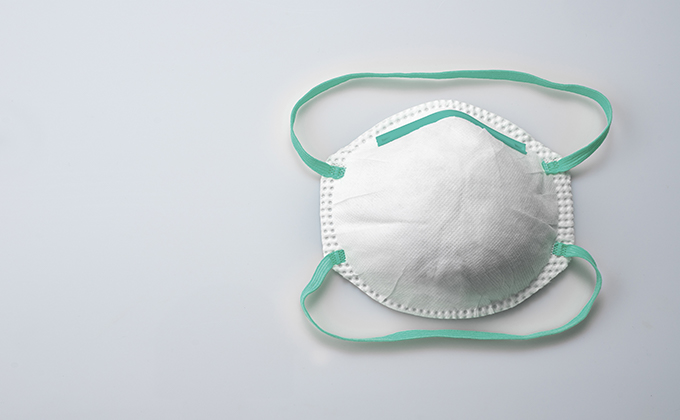
Tools for the Dental Professional: Testing for SARS-CoV-2
In response to the pandemic, the community of laboratories from across the globe have worked to develop new tests to diagnose COVID-19 and to identify persons who have successfully survived the infection. There are then 2 types of tests for these two conditions.
To diagnose COVID-19 a sample of nasal or oral secretions are collected to look for viral RNA, evidence of the presence of SARS-CoV-2 in that person. In short, laboratories have found that a swab taken from the nasopharynx (back of the nose), the nasal vestibule (the nostril), a throat swab, sputum (asking the patient to cough up secretions from their lungs), a swab of the oral epithelium, saliva, and/or a swish and gargle with sterile saline collection all work equally well to detect the virus, given that the virus is there. In the laboratory the sample goes through RNA extraction, and then polymerase chain reaction, or PCR, to amplify the sequence specific to SARS-CoV-2. The results of these tests are “Detected,” positive for the virus, “Not Detected,” no virus or so little that it cannot be detected, or “Inconclusive,” the sample is degraded or insufficient in material to perform the test.
What we know about diagnostic tests for COVID-19 is that persons with symptoms, whether those symptoms are mild or severe, will show a test result of “Detected.” In the very early days after a person is exposed and infected, the amount of virus in their secretions increases rapidly and typically to a level well within the sensitivity of the test to find the virus. If a person is symptomatic but the test shows “Not Detected” it is very likely that the clinical symptoms and signs are due to another infection, such as influenza. If a person was symptomatic, say up to 10-14 days before a test is administered, the test may or may not be resulted as “Detected.” In this case an individual’s immune response may be robust enough to have rid the body of virus – but that will vary from person to person.
Testing to diagnose a symptomatic person is straightforward. As more tests and test materials become available to all communities the standard of practice will soon become to routinely test all symptomatic persons for COVID-19. Here the intent is to make or refute the diagnosis.
The challenge remains for persons who are asymptomatic. Because SARS-CoV-2 is exquisitely contagious and because up to 40% of persons with infection are asymptomatic, the risk of disease is spread to professional staff at the dental office for many months to come. Here diagnostic testing is a tool to identify persons unknowing of themselves to be infected, but equally important to reduce the chances of spread to others, including the professional staff. Diagnostic testing will be critical to persons with even a remote chance of being exposed. A sample collected on a specific day and then reported as “Detected” means the individual is contagious and may develop symptoms in the near term. Conversely, persons tested with the result “Not Detected” do not have the viral infection. If they are careful in the ensuing days and can trace their contacts with other persons, they would then be safe to be seen at their dental appointment.
Testing persons who had COVID-19 and are now well is called testing for “convalescence.” This type of testing involves the collection of blood, more specifically the liquid component of blood called plasma, to look for antibodies against SARS-CoV-2. Immunity against SARS-CoV-2 begins toward the end of the clinical infection and continues for weeks and potentially months after the person is well. These antibodies may prevent the person from being re-infected or greatly reduce the recurrence of symptoms if infection takes hold. In recent days, several new tests have been released that can result antibody tests in a matter of minutes. A positive antibody test is evidence that the person was infected and now has immunity against SARS-Cov-2. A negative test means that the person does not have immunity to SARS-CoV-2, or the amount of antibody produced is very low or it has been a long time since the person had the infection. In the long term, measured in years, antibody testing will be the standard of care when healthcare professionals need to know if a person is contagious. But even when that time comes, the diagnostic test will be useful for complete assurance.
It is likely that a vaccine for COVID-19 will be developed to greatly suppress the risk of new infections and hence another pandemic. Similar to the concern of the need for annual testing for influenza, the chance that SARS-CoV-2 could change genetically and thus create a new SARS-like infection is real. In that case, just like the current pandemic we face, the laboratory will be a partner for the dentist, providing concrete information so the health care professional can better help patients. This co-management between health care professional and diagnostic laboratory emphasizes a motto used by OralDNA® Labs, Test—Don’t Guess!
For more information on how to become an OralDNA Provider – scan HERE: 
- Article Overview with OralDNA - December 17, 2021
- immun19™: OralDNA® Lab’s NEW COVID-19 Neutralizing Antibody Test - August 27, 2021
- Periodontal Inflammation Primes the Systemic Innate Immune Response - November 20, 2020
